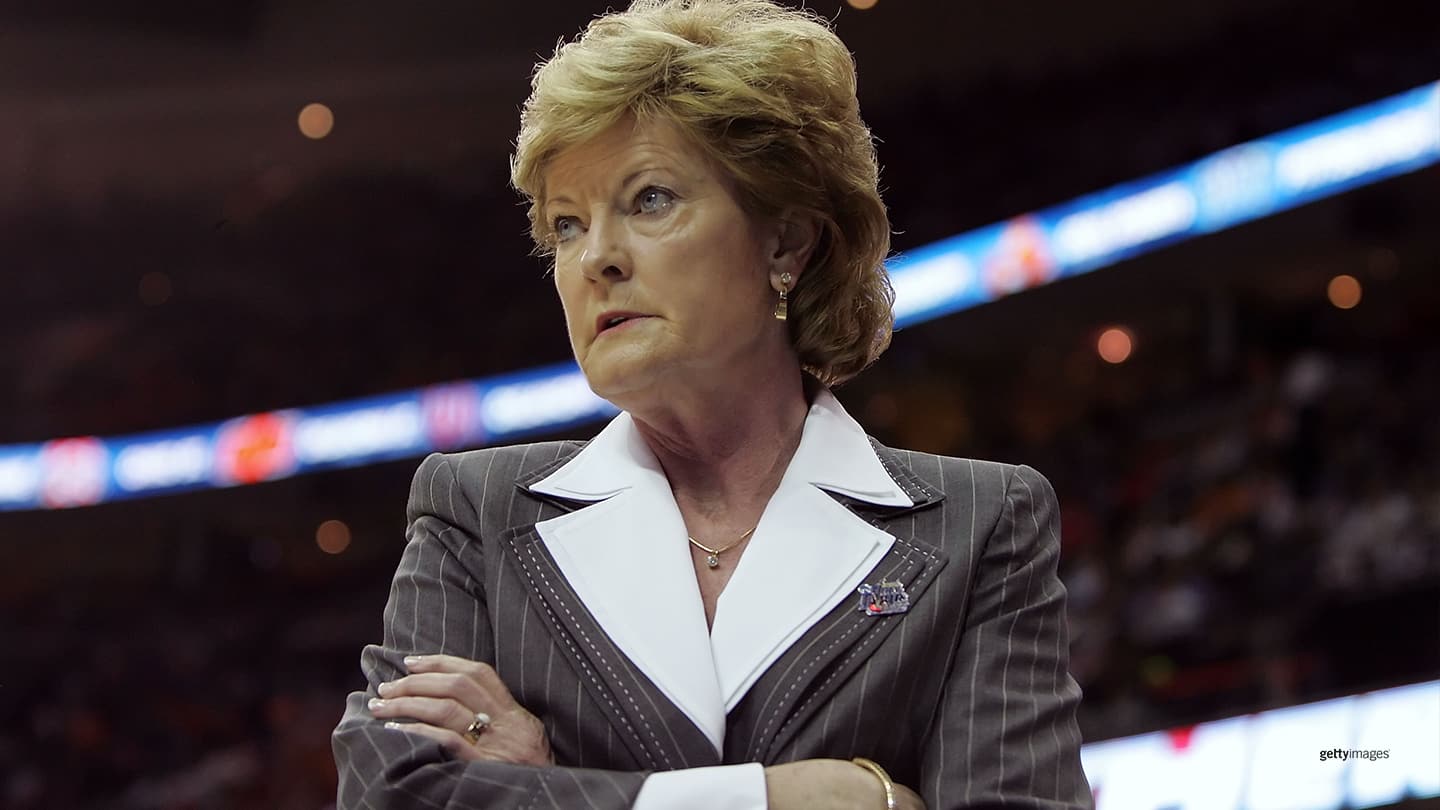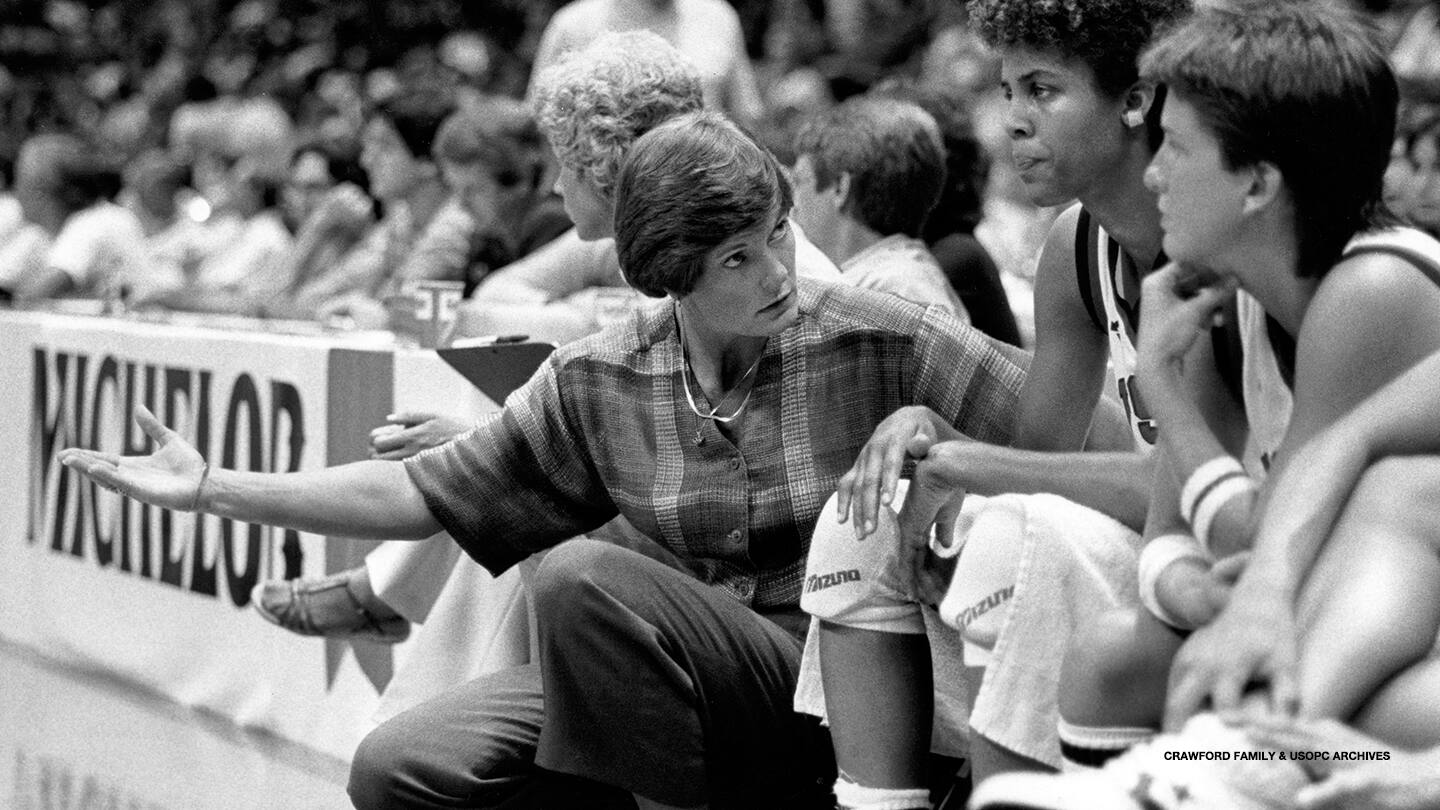
Pat Summitt Is Already A Basketball Icon, Now She’s A U.S. Olympic & Paralympic Hall Of Famer
by Bob Reinert

Pat Summitt coaches during the Final Four game with the North Carolina Tar Heels at the 2007 NCAA Women's Final Four on April 1, 2007 in Cleveland.
When it comes to summing up the late Pat Summitt, you could do a lot worse than a simple sentence uttered by LSU women’s basketball coach Kim Mulkey.
“I’ve said many times: It doesn’t matter how many championships other coaches win,” said Mulkey, “there’ll always only be one Pat Summitt.”
Summitt, who won an Olympic silver medal as a player in 1976 and added a gold medal as the U.S. coach in 1984, also won eight NCAA championships as the Tennessee head coach. Tennessee never missed the NCAA tournament in 38 years. She remains third in all-time wins with 1,098.
There’s perhaps no more iconic coach in the history of women’s basketball.
And the accolades keep rolling in.
On June 24, Summitt, who died in 2016 at age 64, will become the first woman inducted into the U.S. Olympic & Paralympic Hall of Fame in the coaching category.
A true daughter of Tennessee, Summitt (then Pat Head) was born in Clarksville and joined the basketball team at Tennessee-Martin in 1970, two years before Title IX was enacted. A record-setting career there led to her selection to Team USA for the Olympic Games Montreal 1976, the first to feature women’s basketball.
A 5-foot-10 forward, Summitt averaged 5.0 points and 5.7 rebounds in helping Team USA win a silver medal.
Then she had to head back to Knoxville for her full-time job coaching the Lady Vols.
Mulkey has had a front row seat for much of Summitt’s career.
Long before she was national championship winning college coach herself, Mulkey was a talented guard for Louisiana Tech, one of the early powers in women’s college basketball. Summitt’s Lady Vols were a regular nemesis.
“We played them every year,” said Mulkey, who won a pair of national titles as a player. “Pat Summitt was a competitor.”
Summitt must have seen something she liked, because in 1984 she selected Mulkey to play for her on the U.S. Olympic team in Los Angeles.
“I also am indebted to her because six weeks prior to the Olympics, I woke up with a stress fracture on the top of my foot, and I was concerned that they would pick up an alternate,” Mulkey said. “And she comforted me and said absolutely not.”
Did Summitt live up to her reputation as a tough coach in Mulkey’s estimation?
“I wish we had more tough coaches,” Mulkey said. “I think those tough coaches make us who we are and make us appreciate what we have in life now. The stories I would tell are all wonderful because she was a tough coach.
“She was disciplined. She held you accountable. You were a winner because of her being tough.”
Mulkey, who led Baylor to three NCAA titles before taking over at LSU in 2021, also admired Summitt beyond her coaching acumen.
“She was a role model,” Mulkey said. “She was a mother. She was somebody that you just aspired to be like if you were in coaching because she was a winner, she was very competitive, passionate, and yet she included her child in all that she did.
“When I became a mother, I had these memories of watching her cut nets down with her son, and I wanted to do the same.”

Pat Summitt coaching the U.S. women's basketball team at the Olympic Games Los Angeles 1984 in Los Angeles.
Trish Roberts first met Summitt when both were players trying out for the 1976 U.S. Olympic Team. At 24 years old, Summitt was the veteran on Team USA — and already two years into her coaching career at Tennessee.
“I didn’t know she was a Division I head coach,” Roberts said. “I just thought she was a regular player. After we both made the team, she was one of the captains. So, she’s always had that leadership role.
“She just kind of took me under her wing. It was my first time playing international basketball. She was always next to me on the bench, whenever we traveled, always in my ear. We just became friends.”
As the Games ended, Roberts told one of their U.S. teammates that she didn’t want to return to playing at Emporia State in Kansas. She wanted to play somewhere closer to her home state of Georgia.
“The word must have gotten back to Pat,” Roberts said. “I just remember us being on a bus, and she came over and sat near me. She said, ‘I hear you want to transfer.’”
Summitt suggested she come to Tennessee. Sure enough, on the cover of the Lady Vols 1976-77 media guide, there was Roberts kneeling, with Summitt standing behind her former Olympic teammate, resting her right hand on her shoulder.
The transition from teammates to coach and player went smoothly, Roberts said.
“We talked about that,” Roberts said. “Once I transferred, she had called me in the office and sat down. She said, ‘Trish, you know our roles have changed. We’re no longer teammates.’ She said, ‘I’m the head coach.’”
Roberts, who was a senior, told Summitt she had no problem with that. She was there to play basketball and earn her degree.
“That was the end of that conversation,” Roberts said. “She treated me just like she treated all the other players. But I felt like if there was a problem or anything, I always felt comfortable going in her office and talking to her about it because of our previous relationship. It worked out fine.”
That’s an understatement. In that one season in Knoxville, Roberts averaged 29.9 points and 14.2 rebounds per game for Summitt. After all these years and great players at the school, her name remains prominent in the Tennessee record book. Many credit that 1976-77 team with propelling Tennessee into the national spotlight.
“I must have been playing out of my head,” Roberts said. “I always was good, but I never played that great. I felt like I could do anything when I played at Tennessee.
“It seemed like she got more out of me than any other coach. I mean, she really pushed me hard. She really pushed me to be better and encouraged me to be better than what I was. I was good, but she pushed me to be better.
“A lot of people say she’d break you down to build you up, but I don’t think she did. I just thought she told you the truth and helped you to see and made you a better player by correcting all of your bad habits.”
After she played three years in the Women’s Professional Basketball League, Roberts entered the college coaching ranks.
“I took a lot from her,” Roberts said of Summitt. “I tried to emulate her. I tried to coach my teams the way I was coached.
“To be as young as she was, she imparted a lot of wisdom in her coaches. And you could always tell when a player that played for Pat and later went on to coach. You always saw some of her traits in her lineage or her tree. They would always emulate Pat.”
Bob Reinert spent 17 years writing sports for The Boston Globe. He also served as a sports information director at Saint Anselm College and Phillips Exeter Academy. He is a contributor to TeamUSA.org on behalf of Red Line Editorial, Inc.